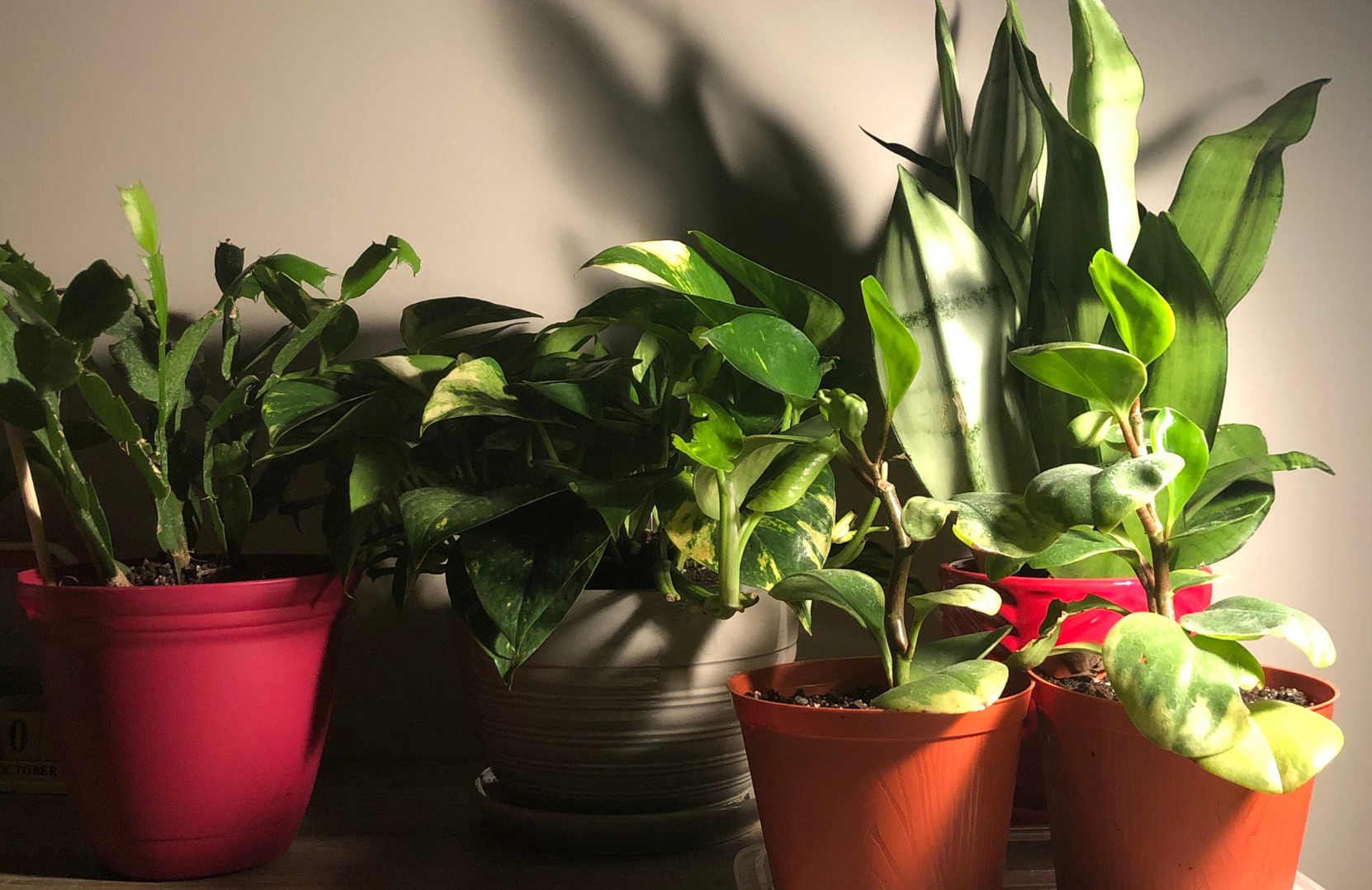Some plant parents might be worried about their plants this upcoming winter. Indoor houseplants are not only great for interiors, but they are also for health, by reducing stress and anxiety. But how about for winter? Can plants also survive during these icy, cold months? Here is a list of the best types of indoor plants to have during winter.
Snake Plants
Snake plants (sansevieria) are great indoor plants for winter. Other than their strappy, attractive leaves and hard texture, the care for them is straightforward and perfect for any plant-lover.
They have a tall size and pointy/sharp tip at the top. Their patterns are very similar to the skin of a snake, so they’re called snake plants. They come in different colours of leaves. Some of them are pure green, and others are dark green with a lining of yellow shade.
They can’t survive in extremely cold temperatures, so putting them indoors is the best option. You don’t have to water them much or fertilize them in order for them to remain stable. Snake plants actually thrive on neglect, so it’s alright if you miss a day — or a few days — of caring for this plant. In winter, the only care you have to do is water them once every two weeks.
Snake plants mostly thrive on free-draining soil mix. Perlite, orchid bark, coco peat, and palm soil work the best, so you can use this soil when repotting them.
The clipping and trimming are also very simple if you plan to propagate this plant. Trimming is usually ideal in the summer, but can also work in winter. Cut one of the healthiest leaves near the soil, or already the cut leaf. Cut the bottom part with a turned v shape. I’m personally not a huge fan of measuring the cuts, but you can feel free to do so to help it grow successfully. Place them in a jar or mug with lukewarm tap water. Warm tap water works perfectly fine. Wait two or three months and the next thing you know, they’ll have roots! After this, you can place them in a pot with soil.
Snake plants are common, but they’re hard to find in grocery stores. Ikea sells them for only $9.99, with a 6” pot measurement.
Christmas Cactus
There’s a reason why this plant is called the Christmas cactus (Thanksgiving cactus): they thrive in cold winters. My Christmas cactus is turning four next year and has flourished since I got it.
The leaves of the Christmas cactus are rounded and have a scalloped edge. It has a pointy side tip, similar to a cactus. Each stem of this plant can grow a single leaf and can also grow double ones. The leaves are curvy and droopy.
This plant is also similar to the snake plant. It thrives on neglect, so you don’t have to water it excessively; once every two weeks will suffice. You also only need to fertilize them in late winter. The Christmas cactus mainly bloom in early winter, so it is ideal to have them this month! With very little effort, you can see their colourful bulbs and opening flowers on cold days of the year, and all you have to do this winter is water them.
For propagation, find healthy leaves to cut off. Look out for y-shaped stems on your Christmas cactus and pick the one with two to three segments of the stem. Put the cut piece in a jar or mug that has lukewarm water. Wait for about two-to-three weeks, then you can finally see the roots growing on the propagated leaf.
You can buy them in a local grocery store for $5.99, but it can be challenging, depending on where you live.
Baby Rubber Plant
Baby Rubber plant (peperomia obtusifolia) is a fantastic plant during winter. I have had my rubber plant for almost two years, and it has survived indoors beautifully. This plant thrives perfectly even if you water them for once every 1 – 2 weeks. If it’s your first time taking care of plants, then this is for you. Even if they’re neglected, especially in winter, it grows new shiny leaves. You can enjoy looking at their beautiful green oblong foliage at any season as they keep growing. Their leaves are thick and fleshy. They come in different colour combinations of green and light green with a shade of yellow at their edges.
This plant works best in peat soil, but a regular tropical soil mixture will also work!
Rubber plants are the easiest to propagate because it’s easy to determine where to cut them off. Find healthy leaves again. Cut the stems below the joint and only leave 2-3 leaves on the tip. Remove all the lower leaves for the roots to grow quickly. Place them in a jar with water, and after two weeks, short roots start to appear.
Ikea sells them for $4.99 each. Some local stores like Lowes also sell them in-store.
Golden Pothos
Golden Pothos (epipremnum) is an excellent plant for people who don’t know much about plants! You only have to water pothos every 1 – 2 weeks. This plant is great because it doesn’t need high-maintenance care. It can thrive naturally, and its long vines will continue to grow with very little attention.
This plant has shiny and heart-shaped leaves. The leaves have a colour combination of white and yellow variegation, and that is why it’s called “golden pothos.” They’re not standing plants, but vining plants. So, it’s best to have them in hanging pots and let their vines be long!
For the soil mixture, coco peat, or any other well-drained soil, will work. Pothos isn’t too picky of a plant and can always work in any regular potting soil if you’re in a pinch!
When it comes to managing, this plant is probably the easiest out of them all. Pick the healthy leaves off and cut them right below a leaf node (where new stems grow). Remove the bottom leaves and leave 2-3 around the tip. Place them in the jar of water and you’ll see their growth in 4-6 weeks.
Golden Pothos are common and can be found at Ikea for only $9.99. Lowes also sells them for as low as $20.
More Tips and Tricks
There are plenty more indoor plants that are ideal to have during winter — these four plants are just the start! In terms of sunlight, all of these plants prefer low light and shade. Fertilizers work best for these plants during spring and summer, so it’s ideal to put them in during those seasons, before winter hits.
A pot with a drainage hole is also preferred, as plants can breathe and get drained quickly. The majority of the plants, including the ones listed above, need to be in a well-drained pot, in able to avoid root rot as well.
Ceramic pots are always recommended as they absorb water better, creating a well-moisturized environment for plants. But plastic pots are also great for winter. Since plants only need to be watered sometimes in winter, plastic pots are great, as they don absorb that much water. You can leave your plants for weeks without watering them if you use plastic pots. Since pots need to have a hole for almost every type of plant, a saucer is needed to catch up the water.
These plants can tolerate 15-24 degrees celsius. Now that you’ve discovered some of the best indoor plants during winter, it’s time to go to the nearest plant shop today and see the pleasure of taking care of plants.





0 Comments